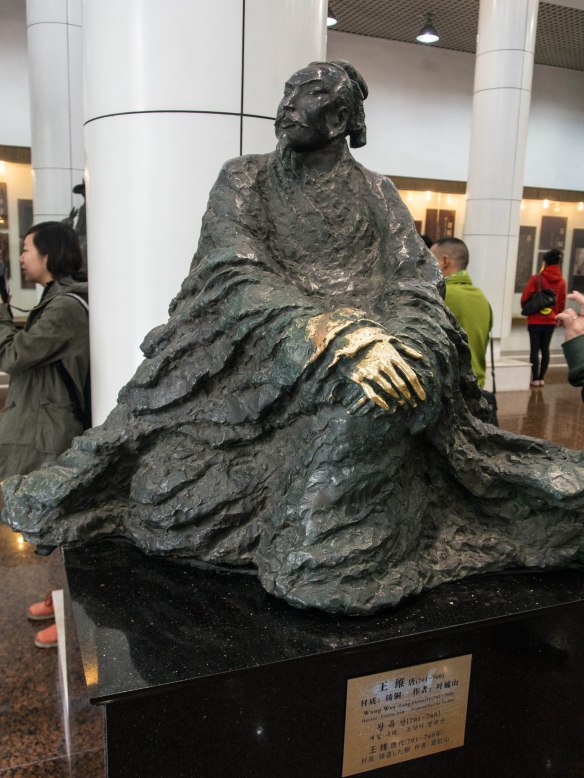I came across this article today about a popular poetry app in China. The article is by Wu Yiyao in Shanghai at China Daily. The story is about a WeChat (微信 wēi xìn) app called 读 诗再睡觉 (dú shǒu shī zài shuìjiào Read a poem before bed). Poetry has been an important and integral part of Chinese society for most of its history. Though poetry is no longer a part of the Chinese education system, to some people it is still important. The 40,000 subscribers to this app are evidence of that. The original story is below, along with a link to the China Daily (Europe) online version.
Here also is a link to a Chinese story about this app.
http://www.nx.xinhuanet.com/2013-10/20/c_117789507.htm
Source: China Daily (1/30/14):
http://europe.chinadaily.com.cn/culture/2014-01/30/content_17265962_2.htm
Reviving the power of poetry
By Wu Yiyao
Wang Xiaoyu’s favorite bedtime routine now is to reach for her smartphone and play a poem. Every night at 10 pm, the 32-year-old sales executive in Shanghai logs on to a poetry-sharing group on the social network WeChat and listens to or reads a poem. It has become a regular pastime ever since she discovered the group, whose Chinese name literally translates to “Read a poem before you sleep”.
“At first I felt the poetry helped me relax and made me calm, but I gradually discovered that joining the group also let me connect with people who share the same passion,” Wang says. Like many of the 40,000 subscribers of the account, Wang used to write poems when she was in college, but gave it up after she started working. Having a family and raising a child left her little time or energy to get creative.
“Read a poem” was initiated by Fan Zhi-xing in March 2013. He had intended to make it a romantic way to express and connect, by reading a poem “to the one you care and love for”, in this age where relationships are both advantaged and disadvantaged by virtual connections. He started the ball rolling with a Chinese translation of Crossing the Bar by English poet Alfred Tennyson.
More and more found out about the poetry account and started to join the discussions, and shared poems. By early 2014, group members had already shared more than 300 poems of a wide range of genres. Subscribers soon grew beyond Fan’s personal network, and volunteers joined an editing team to select works to be sent out through the account. An introduction posted on the poetry-sharing group tells newcomers that “poems will not erase the wrinkles on your face, but they will keep your heart young”.
“It all started from a private emotional need, but it so happened that it also answered the inner callings of many others,” Fan says. A poet himself, Fan says he believes poetry is not distanced from the fast pace of modern life. Not so long ago, poetry societies flourished in China’s universities and high schools, and even with the far-reaching influence of the Internet, a poet at that time would still find a large and appreciative following through books, magazines or even hand-written copies.
“Those were times when people were zealous about poems and poets, which I reckon may not necessarily be healthy. But these days, there is a noticeable gap between how people feel and their ability to express their feelings.”Emotions are often suppressed in today’s world for many reasons, Fan says. It could be due to a lack of time, a neglect of personal feelings, and sometimes, a systemic failure to encourage expression.
His poetry-sharing group has gradually shifted focus from just individual expression to a broader mission – to close the gap between emotions to be expressed and paying attention to and understanding these emotions. “Poetry appreciation is unlikely to be adopted in our education system, and it is not necessary for it to be. Since we have the Internet, we can promote it outside the schooling system, through mobile devices,” Fan says.
An increasing number of volunteers who join the editing team add diversity to the poems introduced to subscribers, who may find themselves listening to a wide range of poetry ranging from Batso Basho’s haiku to Chinese rock ‘n’ roll lyrics, Tang Dynasty (AD 618-907) love songs to the works of the English Lake poets.
Some poems, often recommended by “a friend of a friend”, may also make their debut on the poetry cluster. One contributor of original poems is Yu Xinqiao, whose work If I Die, I Must Die in Your Hands was recently adapted into lyrics for a song which became popular after being promoted on a television program on songwriters. Like Yu, many contributors are keen poets who are not shy about expressing their strongest feeling or most delicate emotional nuances. Some poets may be more reticent about seeking fame, but for the editors of the poetry group, they feel it their duty to share interesting works with their subscribers.
In the age of we-media, there are now more channels to share their works with others, even total strangers. Read a Poem can expand the reach of these interesting poems to a wider audience, Fan says. “Mainstream, scholarly monographs or periodicals may not spare space for these new poets, but they deserve to be more widely known. They are the current voices of this age,” Fan says.





























